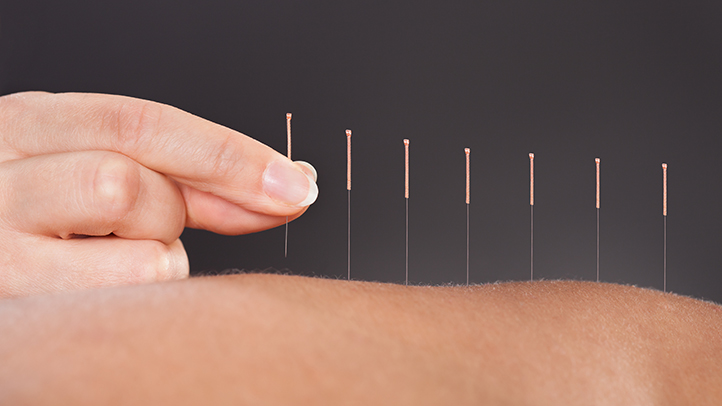Acupuncture Points for Knee Pain

Knee pain often appears with age and in various forms, from simple muscle strain to arthritis. Acupuncture can help manage pain along with other natural treatments like Chinese herbs and dietary therapy. Keep reading to learn about key acupuncture points for knee pain and swelling. It’s time to get your life back on track!
If you’re dealing with knee pain, acupuncture might be the solution for you. By targeting 8 key acupuncture points, you can reduce swelling and alleviate discomfort effectively and naturally.
For a comprehensive approach to knee pain management, visit Alpert Acupuncture in Zichron Yaakov. Our individualized treatment plans incorporate not just acupuncture but also Chinese herbal medicine and dietary therapy. Experience true healing in our tranquil setting, conveniently located just 45 minutes from Haifa and 25 minutes from Hadera. Contact us at 055 500 5265 for more information and start your journey toward a pain-free life today!
What Causes Knee Pain?
Injuries, inflammation, and various types of arthritis are the main causes of knee pain. Check the examples below to take necessary precautions.
Injuries
Knee injuries can be of different types. Here are some common ones:
- Knee Ligament Injuries: Ligaments can overstretch if you experience sudden twists or excessive force on the knee joints, like when repeatedly jumping or stopping quickly while running.
- Tendon Injuries: Anyone can suffer from tendon injuries, but middle-aged athletes participating in running or jumping sports are more likely to suffer. Knee tendon injuries often result from falls, direct stress on the knee, and awkward landings during jumps.
- Dislocation: A dislocation occurs when the knee bones are totally or partially misaligned. It can be caused by high-intensity trauma like falls, car accidents, and sports-related contact, or by an abnormal knee structure.
- Cartilage Tears: Cartilage acts as a cushion between the bones, allowing them to move smoothly. Overuse, muscle weakness, knee misalignment, or a direct blow to the knee can damage the cartilage.
- Broken Patella: The small circular bone, the patella, is in front of the knee, protecting the joint. It can break due to a fall or a direct blow, like in a car accident. Rarely, a sudden muscle contraction of the knee can also damage the patella.
Types of Arthritis
Arthritis comes in over a hundred different varieties. Here are some that are most likely to affect the knee:
- Osteoarthritis: Often called degenerative arthritis, it is the most common type of arthritis. It is a wear-and-tear condition that occurs when the knee cartilage ages and deteriorates with use.
- Rheumatoid Arthritis: The most disabling type of arthritis, it is an autoimmune disorder that can damage almost any joint, including the knees. Its severity can vary and sometimes flares up even though it is a chronic condition.
- Septic Arthritis: This happens when a virus or bacteria from another part of the body migrates through the blood to the knee joint and infects it. It can severely damage the knee cartilage.
- Gout: This condition occurs when high levels of uric acid crystals, also known as urate, build up in a joint. It most commonly affects the big toe but can also occur in the knee. It usually affects only one joint at a time.
- Pseudogout: Sometimes mistaken for gout, it is caused by the formation of calcium crystals in the synovial fluid. It most commonly affects the knees.
Symptoms of Knee Pain
Depending on the underlying cause, the location and intensity of knee pain can vary. Symptoms that may accompany knee pain include:
- Swelling, stiffness, and numbness around the knee
- Knee weakness
- Warmth or redness throughout the knee
- Unusual noises (popping or cracking) when bending or stretching the knee
- Inability to bend or straighten the knee or stand properly
Risk Factors for Knee Pain
Several risk factors can increase the likelihood of knee problems, such as:
- Obesity: Excess weight puts more pressure on knee joints, even during routine activities like walking or climbing stairs. It also accelerates cartilage degeneration, increasing the risk of osteoarthritis.
- Previous Knee Injury: A previous knee injury increases the risk of another knee injury.
- Certain Sports: Knee injuries are more likely during some sports than others, including activities like basketball, running, and skiing, which involve sudden stops, turns, and twists.
- Specific Jobs: Occupations that impose repetitive stress on the knees, such as housework, farming, and construction, can increase the risk. These require frequent bending, standing, lifting, and climbing stairs.
- Lack of Muscle Strength or Flexibility: Strong muscles stabilize and protect the joints. Without the necessary muscle strength and flexibility to maintain your full range of motion safely, you put undue stress on your knees.
How Acupuncture Works for Knee Pain
In Traditional Chinese Medicine (TCM), knee pain is classified as “Bi Syndrome,” resulting from the invasion of external pathogenic wind, cold, dampness, and heat attacking the knee joints. The condition is characterized by blockage of qi (vital force) and blood flow in channels called meridians and is generally classified into three types:
- Cold Stagnation due to Yang Deficiency: Manifests as pain, stiffness, and reduced knee function; worsens with cold and alleviated with heat.
- Kidney Essence Deficiency: Characterized by limited knee movements, dizziness, and tinnitus.
- Blood Stagnation: Main signs include fixed pain, limited range of motion, dark face, and purple lips.
TCM holds that there are about 2,000 acupuncture points in the body connected through different pathways and meridians. Your acupuncturist will choose several points based on your symptoms and constitution. Thus, acupuncture can facilitate the free flow of qi (energy), relieve pain and swelling, and restore the knee and surrounding tissues’ natural range of motion and functionality.
Strategically placed needles help reduce swelling, promote blood flow, and relax tense muscles. Sensations also send signals from the spinal cord to the brain to release endorphins and enkephalins, the body’s natural painkillers. Cortisol (a hormone that helps regulate inflammation) is also produced.
In fact, acupuncture can improve function and quality of life, making it worth trying. Patients who have used acupuncture, particularly for knee osteoarthritis, have reported considerable improvement in pain and function after treatment.
8 Key Acupuncture Points to Relieve Knee Pain
- Calf’s Nose (Stomach 35 or ST 35): Located in the outer hollow just below the kneecap.
- Three Mile Point (Stomach 36 or ST 36): Found outside the tibia and below the kneecap. One of the easiest points to identify.
- Sunny Side of the Mountain (Gallbladder 34 or GB 34): Located at the top of the tibia and below the kneecap. Works well for severe or chronic knee pain.
- Shady Side of the Mountain (Spleen 9 or SP 9): As the name suggests, this point is the counterpart of the Sunny Side of the Mountain. It is located at the top of the tibia and inside the knee.
- Eye of the Knee (Xiyan): When the knee is flexed, the point is in the medial depression of the patellar ligament.
- Crane’s Summit (Heding): Located above the knee, in the depression of the midpoint of the upper patellar edge.
- Twisted Spring (Liver 8 or LV 8): Found on the inner back of the knee, where the fold ends when you bend the knee.
- Nourishing Valley (Kidney 10 or KD 10): Located at the inner edge of the knee fold. It is the inner counterpart of the dominant activity point.
Is Acupuncture FDA Approved in the USA?
A resounding YES!
In fact, the FDA recognized acupuncture needles as medical devices in 1996, giving acupuncture its first mark of approval in the United States. Since then, research has shown that acupuncture is effective. No wonder the medical world now generally accepts it.
Moreover, at the 1997 National Institutes of Health Consensus Conference, acupuncture was recommended as a possible alternative for dose reduction or avoiding the use of medications. Without a doubt, acupuncture has attracted more attention as an alternative treatment for knee pain.
Interestingly, medical professionals now avoid prescribing patients medications, especially narcotics, for chronic pain. Even the 2019 clinical practice guidelines for physicians included acupuncture as one of the therapies for knee pain.
Chinese Herbal Medicine for Knee Pain
Individual Herbs
- Xu Duan: Strengthens bones, promotes blood movement, relieves pain, and reduces swelling.
- Nui Xi: Can reduce joint swelling, increase bone mineral density, nourish tendons, and relieve pain.
- Du Zhong: The most popular Chinese herb in treating osteoarthritis; controls inflammation and helps with obesity.
- Chuan Wu: Dispels wind, disperses cold, stops pain, and reduces swelling.
- Dang Gui: Promotes cartilage healing while preventing its deterioration in osteoarthritis.
Herbal Formulations
- Du Huo Ji Sheng Tang: Dispels wind, cold, and dampness. Can reduce pain and stiffness and help improve knee function by nourishing qi and blood.
- Zhen Gu Xi Jin Fang: Dispels wind and dampness, nourishes yang and blood of the liver and kidneys, binds bones and ligaments, and moves and complements blood.
- Shu Jing Huo Xue Tang: Clears the meridians, moves qi and blood, nourishes blood, and removes dampness and wind.
- Juan Bi Tang: Moves blood and dispels wind, dampness, and cold to relieve pain.
- Danggui Sini Tang: Warms the channels, dispels cold, unblocks vessels, and promotes blood flow.
Eating Right for Knee Pain
Foods to Eat
Here are some healthy foods that can help relieve knee pain:
- Dark Leafy Greens: Broccoli, kale, spinach, and collards. They help the body produce collagen, a crucial component of cartilage that supports joint flexibility.
- Fatty Fish: Mackerel, salmon, and tuna. These are rich in omega-3 fatty acids that reduce inflammation.
- Berries: Blueberries, blackberries, raspberries, and strawberries. These are high in antioxidants and can combat inflammation.
- Nuts: Almonds, pecans, hazelnuts, pistachios, and walnuts. They are good sources of anti-inflammatory nutrients.
- Garlic and Onions: Reduce the discomfort associated with arthritis and boost immunity.
- Green Tea: Contains antioxidants that delay cartilage deterioration and inhibit specific inflammatory molecules.
Foods to Avoid
Some foods can aggravate knee pain and inflammation:
- Added Sugars: White bread, cereals, pasta, puddings, cakes, sodas, and fruit juices. They can worsen inflammation.
- High-Salt Foods: Processed, packaged, and frozen foods. These can cause joint swelling and worsen knee pain.
- Omega-6 Fatty Acids: Corn, sunflower, and vegetable oils. They accelerate the production of inflammatory chemicals in the body.
- Trans and Saturated Fats: Baked and processed foods. They promote inflammation.
If you’re dealing with knee pain, acupuncture might be the solution for you. By targeting key acupuncture points, you can reduce swelling and alleviate discomfort effectively and naturally.
For a comprehensive approach to knee pain management, visit Alpert Acupuncture in Zichron Yaakov. Our individualized treatment plans incorporate not just acupuncture but also Chinese herbal medicine and dietary therapy.
Experience true healing in our tranquil setting, conveniently located just 45 minutes from Haifa and 25 minutes from Hadera. Contact us at 055 500 5265 for more information and start your journey toward a pain-free life today!
